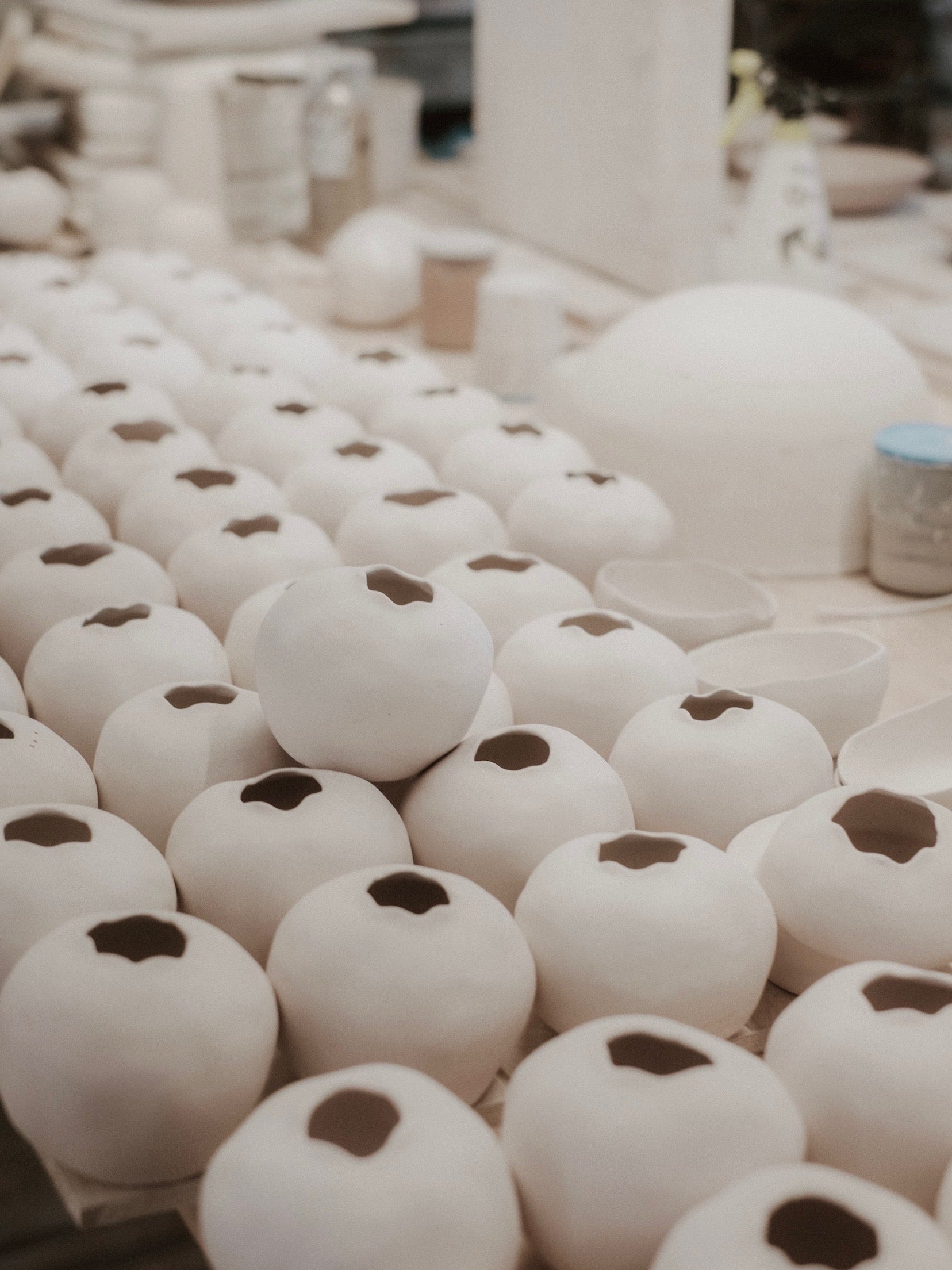The La-Eva x Silva Sancho collaboration goes beyond the realms of art and showcases our shared commitment to sustainability, purpose, and the transformative power of creativity.
Here we meet Silva, delving into the inspiration behind his work and the creative process involved in making the La-Eva x Silva Sancho inhalation pomegranates.

How did your collaboration with La-Eva come together?
Serendipity brought me together with Louisa, the founder of La-Eva, during a local festival where I was visiting one of her partners at Morgado do Quintão in the Algarve, Portugal. Our connection was instant, rooted in shared values of embracing simple luxuries, promoting wellbeing, and recognising the therapeutic qualities of art.
For me, pottery has been a lifeline, offering focus and purpose as I overcame addiction and embarked on a fresh start. Inspired by my own journey, I aspire to provide second chances to fellow ex-addicts by establishing a social enterprise center that supports them through recycling waste materials.
The collaboration with La-Eva has been a perfect marriage of aesthetics and values. Together, we have crafted multipurpose porcelain pomegranates for fragrant inhalations of essential oils and versatile scoops for bath salts. The fusion of our artistic sensibilities has resulted in pieces that embody simplicity, elegance, and purpose. By joining forces, we have amplified the message of sustainable art, reminding the world that luxury can be found in repurposing, and longevity can be born from recycled materials.
I am immensely grateful for this collaboration with La-Eva, as it has deepened my commitment to sustainable art and my vision of creating a positive impact through creativity. I invite you all to join this journey of transformation, where waste becomes art and purpose meets beauty.

Could you share some insights into the materials you use and the creative process?
Louisa gave me a brief to co-create multipurpose porcelain pomegranates for fragrant inhalations of essential oils and multi-purpose scoops for bath salts. Porcelain, being the most resistant clay body, is ideal for sculpting these forms. The one that I use for the La-Eva pieces comes from Spain since it is not available in Portugal.
Process wise first, I sculpt the general shape of the piece from a ball of clay, considering the clay's shrinkage that will occur later. Once that part is done, I create a mould for the piece. I know in advance that the final pomegranate cannot be achieved with the mould alone because there are finishing elements that can only be done by hand. Therefore, the mould provides me with a rough shape of the final pomegranates. Once the mould is complete and dry, I pour liquid porcelain into it. Over time, the mould absorbs the excess water, leaving behind a drier wall of porcelain. I pour out the excess porcelain, and the basic pomegranate shape remains. All pieces require hand finishing, taking around 10 minutes per piece across both modelling and glazing stages. Any excess porcelain resulting from cuts or broken raw pieces is collected and placed in a bucket for recycling and reuse in new pieces.
What inspires you and your work?
I am largely inspired by the concept and process of transforming waste into luxury. Embracing the saying "a necessidade aguça o engenho" ("necessity sharpens the tool"), I believe that creativity thrives in the face of adversity and that problem-solving is the answer to life's challenges. While glass blowing, my initial area of study, proved financially demanding, I discovered the power of working with bio-plastics, particularly corn starch, to create captivating light installations and sculptures. By leveraging locally sourced materials and repurposing waste, I strive to create meaningful pieces that resonate with clients and possess longevity.

Tell us about the kintsugi Inhalation Pomegrantes.
In the process of making the porcelain pomegranates and seeds, there were some casualties during firing. Knowing that Louisa and I are inspired by the process of reimagining waste and seeing the beauty of the imperfect, it seemed very natural to experiment with the idea of Kintsugi, whereby cracks and breaks are repaired using gold.
The process involves filling all cracks with gold powder and oil and firing the pieces again. Next, I add glass powder which does not contract and repeat the firing. This process therefore involves three rounds of firing, which is not the most energy efficient, but it produces beautiful pieces that last a lifetime.

Silva's pieces are not just objects; they are also vessels infused with intentions and feelings that find resonance with those who behold them.
And this is precisely what La-Eva is also all about.

